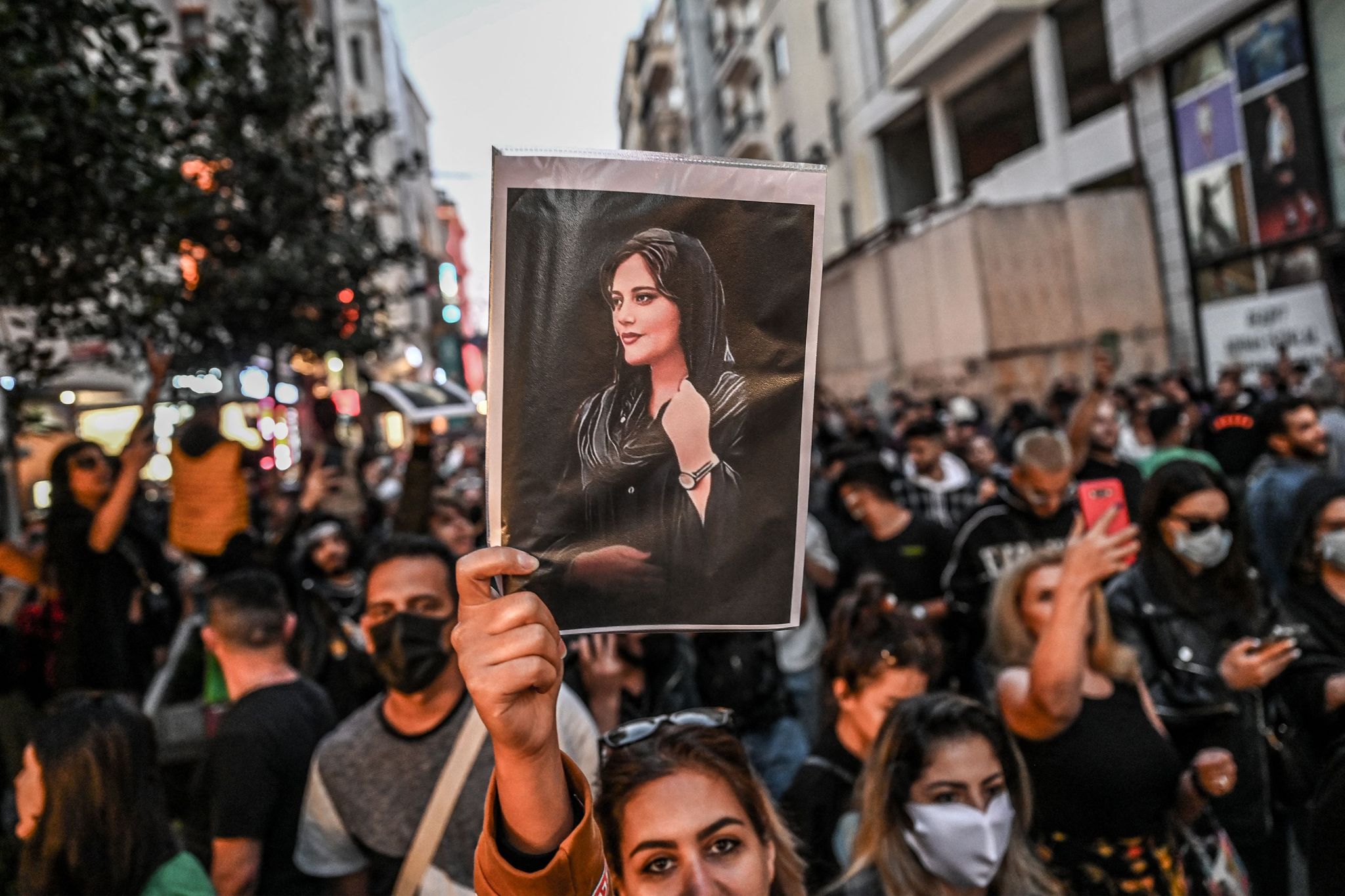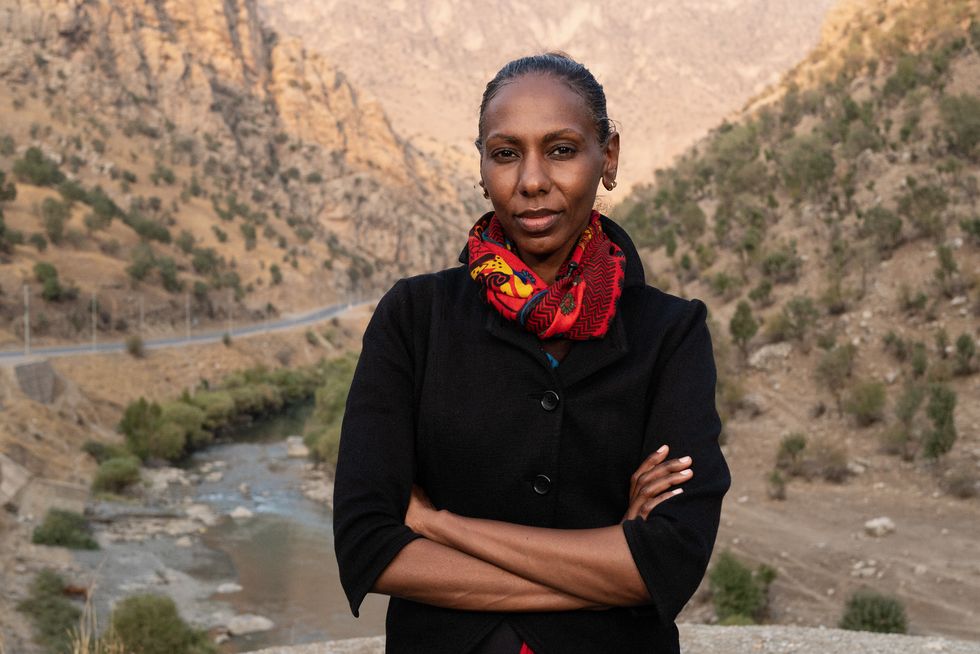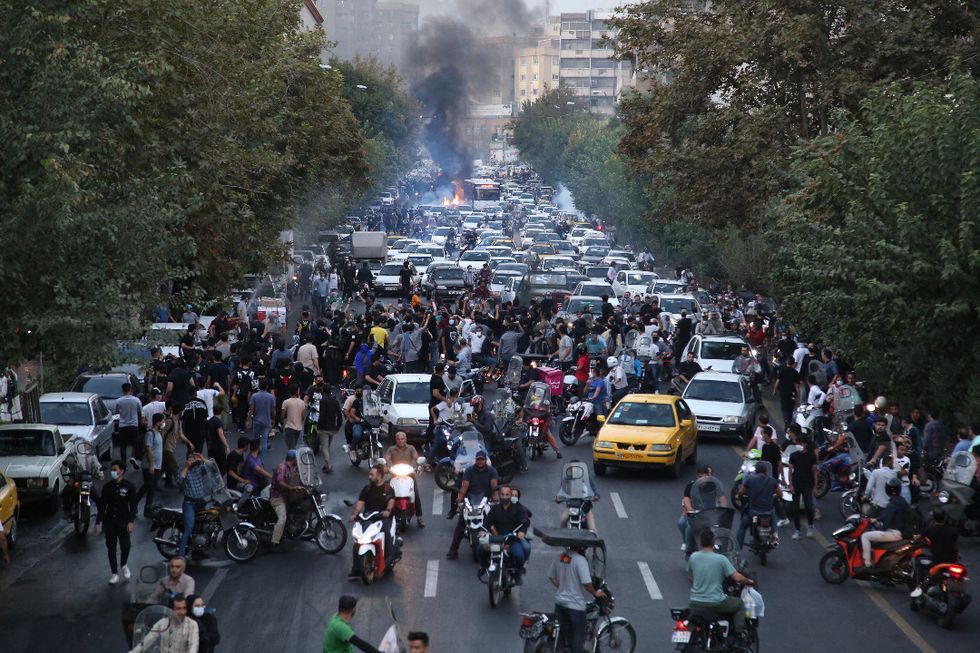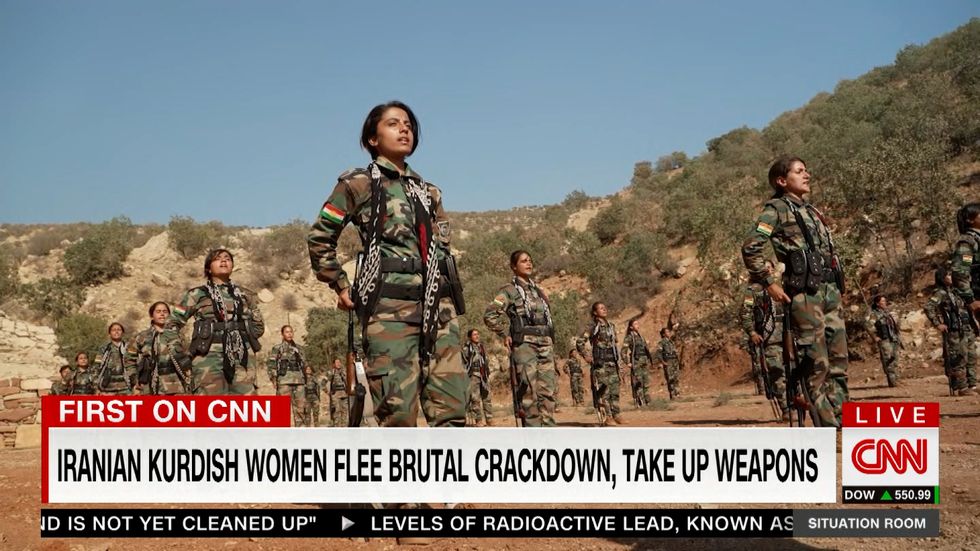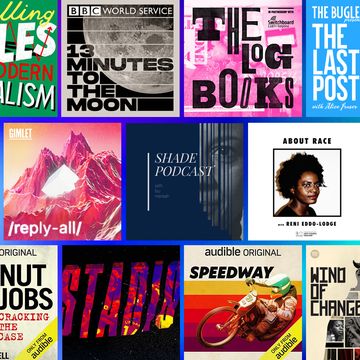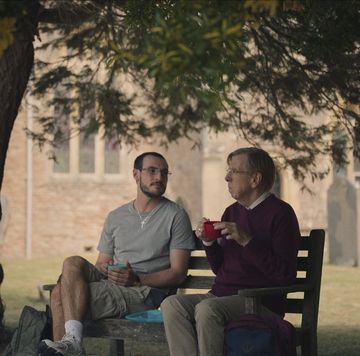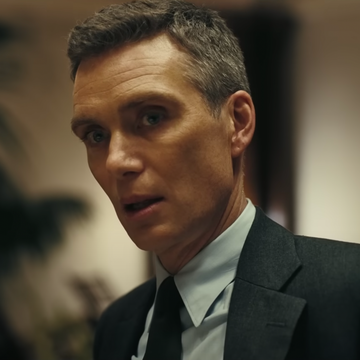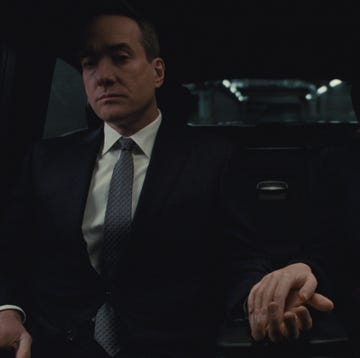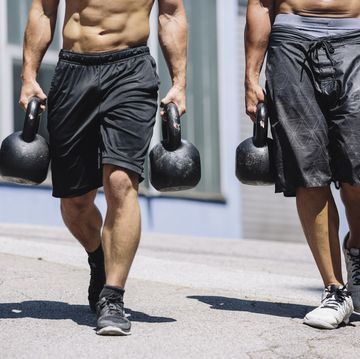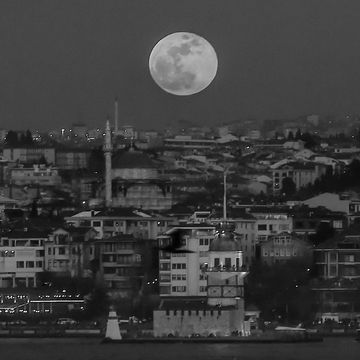The mass demonstrations in the streets of Iran are about the hijab. Well, they are and they aren’t. The protests began when the family of Mahsa Amini, a young Iranian woman, said she died in the custody of Iran’s morality police after they detained her for wearing hers improperly. But so much of the story has gone unnoticed in the West.
Amini was Kurdish, an ethnic minority in Iran that has faced persecution since well before the Islamic Revolution in 1979. Amini could not legally register her true name, Zhina, because Kurdish names are banned by clerical authorities. The Kurds are among Iran’s religious minorities, too, and all of this has led to a belief among supporters of the protest movement that Amini’s treatment, the ease with which violence was visited upon her, cannot be separated from who she was: a young, female ethnic and religious minority with no ties to the ruling classes.
That is why she has proved such a totem for all of the Iranian regime’s many dissidents to rally around, why even ethnic Persian protesters have begun to call her “Zhina” in the streets. The hijab has become a symbol of the regime’s hollow claims of moral purity at a time when Iran’s people are bearing the brunt of its economic ruin (fuelLed in significant part by crunching U.S. sanctions), scraping and starving while the nation’s favored sons and daughters live just fine. In fact, CNN Chief International Investigative Correspondent Nima Elbagir told me, some of the prime enforcers of Iran’s morality codes are not old traditionalists but young women who enjoy nice lives—and even the trappings of Western life—because of their proximity to power.
I reached Elbagir at a border town in Iraqi Kurdistan, where Iranian Kurds in the protest movement have begun to flee when the risk to themselves and their families grows too great. For CNN, she has profiled some of the women who have taken up arms on both sides of the border. Border-crossers have told Elbagir that people are being disappeared in Iran at a frightening rate. But behind the curtain of a media and internet blackout, we can get only a very narrow view into what’s happening.
In the conversation below edited for length and clarity, we spoke about what's happening at the border, Iran’s dangerous moves to internationalise the conflict and blame the uprisings on outside agitators, and the many swirling currents of what could be a revolutionary moment—one that the wider world seems mostly content to ignore.
Where are you at the moment?
We are less than a kilometre from Iran. The border follows a little bit of a squiggly line, so when you look out from where we're staying, which is a slightly higher vantage point, you do feel slightly engulfed by Iran. That's probably because of all the stories we've been hearing about the ways that the people we've been interviewing have been escaping. The idea of actually being able to see these mountains under cover of dark really brings home the risks that people are taking.
How common is it for people to make their way across the border with smugglers?
It's the safest way. We met some people this evening at the border crossing who are from the Kurdish-majority towns, just the other side in Iran, and most of them had only been allowed to cross over because, in essence, their closest loved ones were hostages of the regime. One woman had a second teenage son she had left behind. Anyone who crosses over takes the risk if they have their name on some kind of regime list, which at the moment is so many people.
We have so many blind spots with regards to what's happening inside Iran, but one is the number of the disappeared. The numbers of people who are on these regime lists and therefore are unable to use the official border crossings—the rough numbers that we got from the Kurdish authorities—was that there were over 500 families that have crossed over. But then so many people are crossing with the kolbars, as the Iranian smugglers are known. And they're traveling through territory which is heavily militarized. We have not yet been able to see it through the puzzle that we're piecing together, through the social media video, but the people that we have been able to speak to are painting this picture of a heavy mobilisation of regime forces, from the IRGC [Islamic Revolutionary Guard Corps] to the intelligence services to the army to the police. They are deploying into these towns in the Kurdish-majority west. That region is second only to Tehran in terms of the level of scrutiny, the level of emphasis, and mobilisation and militarization.
It's not a perfect picture, it's not a complete picture. And that's actually one of the reasons we came up to the border, because we were hoping that we would be able to access more witnesses. People are incredibly brave, those who have been able to cross, but they are really, really scared. So it's piecing together that puzzle while protecting sources. It's difficult, but the picture that's emerging is pretty horrific.
Does it seem like the level of violence against protesters is elevated in Iran’s Kurdish-majority areas?
You have the background of the decades-long persecution of Iran's non-Persian minorities, specifically the Baluchis and the Kurds, [and] the emphasis on the Persian majority and this homogenisation of Iran, pre-dating the Islamic Republic. There's this existential element to what happens in the Kurdish regions and in Balochistan, because they have an outlet to the world—Balochistan has Pakistan, and Kurdistan has the Northern Iraqi Kurdish region. As the regime is concerned, what happens in Kurdistan—especially because of the existence of the Kurdish Iranian opposition parties and their existence inside the Kurdish regions of Iraq—there is this sense that what the Kurds do is existential to the regime. The numbers bare that out— you have these extreme numbers in the jails in the Kurdish-majority cities. You also have a heightened death toll in Balochistan and in the Kurdish-majority cities.
The regime is also falling back on its old practices of persecution when it comes to the Kurds. When you speak to many Iranian Kurds, they believe that it wasn't a coincidence that Mahsa Amini was a Kurd. That it is another level of the humiliation that they feel as Iranian Kurd, that the regime felt that it could do what it did to Mahsa, in terms of her death in police custody. And again, all the details have not yet emerged, but what we know is that her family believes she died in police custody. They felt the regime felt it could do this because she was Kurdish. And that is why we wanted to emphasize the use of the name “Zhina.” Because to take that away from her in death, to take away the name that her loved ones had used for her felt like, in a way, we would ourselves be complicit in that.
That she was unable to even register that name legally, and she had to use the Persian name of Mahsa—it seems like there's many methods of oppression.
The law is clear that only Persian names can be registered as part of this push for a homogenised Iran. Kurdish Iranians are also Sunni, so religiously othered in the context of a Persian Shia majority.
Let’s be clear, nobody walks out into a demonstration uncovering their hair—whether they are Persian or Balochi or Azeri or Kurdish—without being aware of the risks that they take. But from the analysis our investigative team has conducted of the social media video, there was a level of comfort for regime forces in using live fire earlier and more often in Kurdish-majority western cities.
Then you hear the rhetoric the regime is using in its bid to internationalise what is essentially its own internal pain by accusing the Kurdish Iranian opposition groups of being the traitors that are the cause of what is happening, that they have sowed the seeds for these demonstrations. They clearly are falling back on a marginalisation and an othering and a kind of racism, frankly: an ethnic persecution of the Kurds that they believe will allow them to pass blame, even as part of their internal domestic propaganda. So far that's not taking root. Once the Kurdish-minority demonstrators began to speak about how “Mahsa” is not her name, you're now seeing Persian-majority demonstrators and social media handles using “Zhina Amini” alongside “Mahsa Amini.” So there is a growing awareness that, for the Kurds, her death brings with it another layer of pain. That’s not to say that everybody who goes out there doesn't take a huge risk, or that anybody who goes out there feels that they have protection from the state, but we cannot ignore the historic persecution minorities have suffered in Iran, pre-dating the Islamic Revolution.
With Iran launching missiles into Iraqi Kurdistan, is that another way for the regime to paint this as a Kurdish problem rather than an Iranian problem? An external threat rather than one from their own people?
Yeah, absolutely. General [Mohammad] Bagheri, the chief of staff for the Iranian armed forces, said it very explicitly over the weekend: "We know who the traitors are. We know it comes from the Kurdish regions of Iran.” And that has been echoed at the very highest levels in Iran. And what they are doing is internationalising their internal issues. The question for the United States is, then, "Why is the U.S. silent?" Why is the U.S. silent when [U.S. Central Command] has admitted that it has had to act to obstruct the path of an Iranian drone because it posed a real threat to U.S. assets and personnel at Erbil airport? Reading between the lines, that's essentially saying that Iran's onslaught of missiles is beginning to impact the U.S. mission [of] killing the remnants of ISIS in Iraq. Where we traveled down is very close to where the Peshmerga pushed back ISIS, but also faced off against Iranian proxies—the Hashd, the popular militias that are backed by Iran inside federal Iraq. That is a complicated part of the world, but it's a part of the world where the U.S. has said that it has a very clear interest.
Iran is now meaningfully interfering with that mission. If you look at any of the fire maps of attacks that are big enough for NASA satellites to pick up, in addition to the Iranian drone strikes, you also see Katyusha [rocket] strikes, and those are too short-range to have come from inside Iran. Which means that they're coming from Iranian proxies, and they have targets within Iraqi Kurdistan. And yet there is no meaningful dialogue globally about any attempt to create safe haven or safe passage for these demonstrators, or for people who are on these Iranian regime lists. When we are asked why by fleeing Iranians, we don't really have an answer.
What are people doing when they arrive across the border?
People are still incredibly afraid of the long arm of Iran, and that's not just missiles raining down from the sky. They're very afraid about the presence of Iranian intelligence operatives inside the north of Iraq and across federal Iraq. Because Iran wields huge influence inside Iraq itself. So a lot of the people we're speaking to have tended to stay outside of the main cities. They've stayed outside of the regional capital of Erbil. They’re very concerned about putting down roots, and they're very concerned about what will happen to their families back inside Iran if they are known to have crossed over. But there is a trickle of people who are joining Kurdish Iranian opposition parties that have bases in the north of Iraq. Those who bring over families and young children put down their families and their children somewhere secure and then the men take up arms. There are also some women who are taking up arms. [CNN’s segment on Kurdish women volunteering to fight] was a difficult piece to do, because of course we were very cognisant of not wanting to create a bigger target. Iran is saying that these people are an enemy within. Whereas it is actually the actions of Iran that are creating this desperation, especially among these young women [who feel] that, "Well, if I'm going to die anyway, then I might as well fight.”
These women are fighting inside Iran. When they’ve felt that they are either too much at risk, for themselves or for their families, they have crossed over—and they still want to be part of this fight. They wanted to communicate that they are not victims, and that's why they're taking up arms. In the absence of a meaningful response from the international community to stop what has been happening for weeks now, they don't seem to feel that they have an alternative.
You mentioned their willingness to die for this cause. Does this feel like it's a revolutionary moment in that so many people seem willing to risk their lives for their freedom?
When we’ve spoken to people both inside and outside Iran, they all really want to drive home one point: The hijab is just a symbol. It embodies everything about the regime that has brought them to this breaking point. Everyone you speak to speaks about the inability to live, and that is what is giving birth to this willingness to die. It is about the economic breaking point, the daily violations and humiliations. And now the risk not only to their lives as individuals when they seek to speak out against the regime, but to the lives of everybody they know and love. One of the women we spoke to tonight spoke about how she and family members in cities around Iran almost have this whisper network of women, telling each other about the new and twisted ways the regime is finding to degrade women who go out on these demonstrations, warning each other, confirming with each other that this is what's happening.
How do you protect yourself? How do you protect your children? I'm from Sudan, and we covered the demonstrations there. I just remember speaking to someone who said to me, "When they start using live ammunition and you know that you are dead anyway—that if you decided to stop chanting and go home, that the regime has its list and they will drag you out of your house and they will disappear you—then what do you have to lose?" I don't know that we are there with Iran. I hear the echoes of that in almost every conversation I have.
In the Western view, this is about young women fighting for their rights. How much of the movement is that?
I think the entirety of the movement is far bigger than that. It was an expression of an aspect of the degradation and the violation that women specifically suffer under the regime, but it was always about more than that.
What's been really interesting speaking to young women inside and outside Iran is that often the enforcers of the will of the regime are women you would expect to be fighting for freedom. When they described the children of the elite—the Iranian equivalent of the Chinese Communist Party princelings—and how they dress, I think we have a very outdated idea of who it is who is enforcing the dress codes, that they are these very conservative traditional-looking women and men. But actually, when they describe some of these enforcers—the plastic surgery, perfect perked nose, bleached blonde streak, the hijab pinned on right at the back of the head—they’re not exactly conservatively clad, but they have benefited from proximity to the Islamic regime and the different architectures of its oppression. These are the people often that are turning up at demonstrations and pointing out the demonstrators. And in a lot of instances, these are the women beating other young women. But if you were to line them up, viewing it from a Western lens, you couldn't tell the difference between those fighting for "women's lives" and those who are enforcing the morality of the Islamic regime.
I think that's why it really is about so much more. It's about people who are unable to feed their families, families who are unable to envisage a future for themselves and their loved ones, and who are tired of the degradations and the daily humiliations. Seeing others able to live and enjoy a certain amount of laxity in the enforcement of these morality rules and have the trappings of a “decrepit Western lifestyle,” what the regime would view as a corrupt, devalued Western outlook of life.
The hijab is a symbol, and it is a symbol that represents the moral purity that the regime has clothed itself in, when actually it is corrupt and immoral in ways that hurt people's lives. They continue to live well while people starve—that's what the hijab represents for people. And I think that's why Mahsa Amini, as a minority Kurdish Iranian woman, really was able to be a symbol of that humiliation in every single nuance.
There’s a class element, where it's not really about these traditional rules, it's a tool of the powerful to make other people stay in line?
Absolutely. And it's also the moral modesty that the regime has clothed itself in, that they are the arbiters and enforcers of this higher moral standard as represented by the veil. When we speak to activists and opposition groups inside Iran, they say that when they have felt resistance in some cities—even in the Kurdish-majority regions—to take up the call of the demonstration, part of it has been because the religious clerics have been playing into that idea that, “We are the front line, we are holding back the tide of immorality. If the regime goes, so goes this failsafe for the dignity and the purity of your daughters. We are the guardians of moral purity.”
But I think that moral purity [has come to represent] the genuine depth of the corruption and the immorality when it comes to the financial improprieties of senior figures within the regime. While the people have borne the brunt of the economic deterioration felt after the intensification of U.S. sanctions, I think what a lot of people are trying to say is [that] you cannot have moral purity in the face of financial impropriety and financial crash. And so the burning of the hijab, the casting off of the hijab is to strike at the heart of the regime's claim to be the guardians of moral purity. How can you be the guardians of moral purity when you eat while the people of Iran starve?
Do you think there’s anything I’m missing about the story?
There’s too much we don’t know. We have too many blind spots with regards to the cruelties the regime is perpetuating against its own people. I think that's what should be keeping us all up at night. We know people are being disappeared, but we have no idea the numbers of the disappeared. We have a sense that, in addition to the jails and detention centres being filled, there are new places where people are being taken but we don't know where. One woman that we spoke to tonight said that her entire city was becoming one big prison. Even people in their homes, essentially, are jailed. I struggle with the idea that we are not adequately communicating that there is so much horror being perpetuated inside Iran that we do not know the full extent of.
Jack Holmes is a senior staff writer at Esquire, where he covers politics and sports. He also hosts Unapocalypse, a show about solutions to the climate crisis.
